Welcome to Minos Boutique Hotel
Traditional Cretan hospitality with boutique aesthetics and professionalism
Welcome to Minos Boutique Hotel
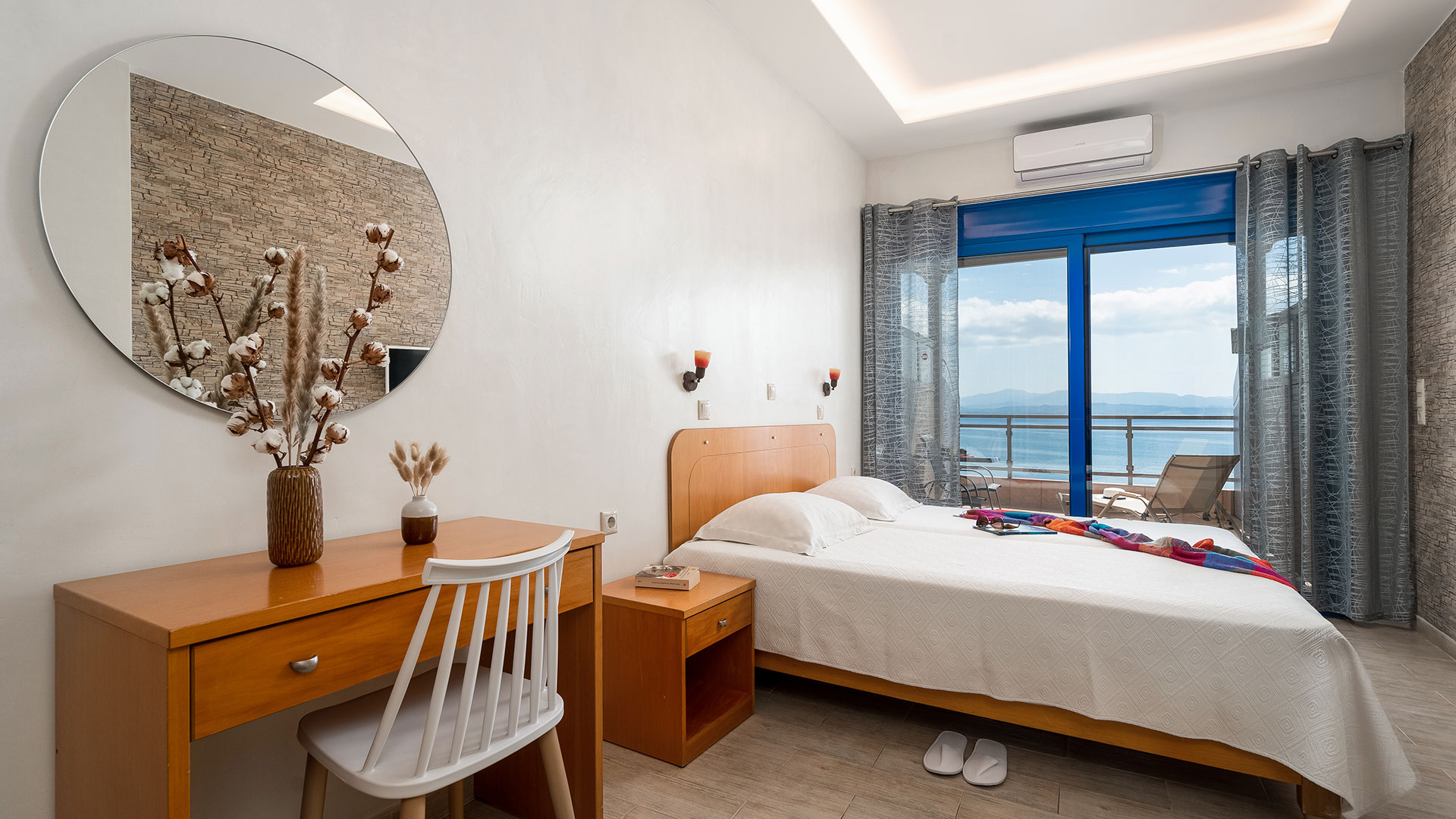
Superior Double Sea View
Enjoy your stay in our comfortable and elegant rooms, decorated in earthy tones that exude warmth and relaxation. The rooms are spacious, sunny, with large windows that allow natural light to bathe them throughout the day. The bathroom offers you absolute comfort, as it has a large shower or bathtub with a cabin, for moments of absolute relaxation. Enjoy the magnificent view of the sea from the large and comfortably equipped private balcony. Most rooms have an outdoor seating area and sun loungers on the balcony, ideal for enjoying the sun and the breeze of the island view. These rooms are located on the 1st and 2nd floors of our hotel and all have a card-activated power system, ensuring practicality and energy efficiency. Book the room that suits you and indulge in the unique accommodation experience that Minos Boutique Hotel offers you!
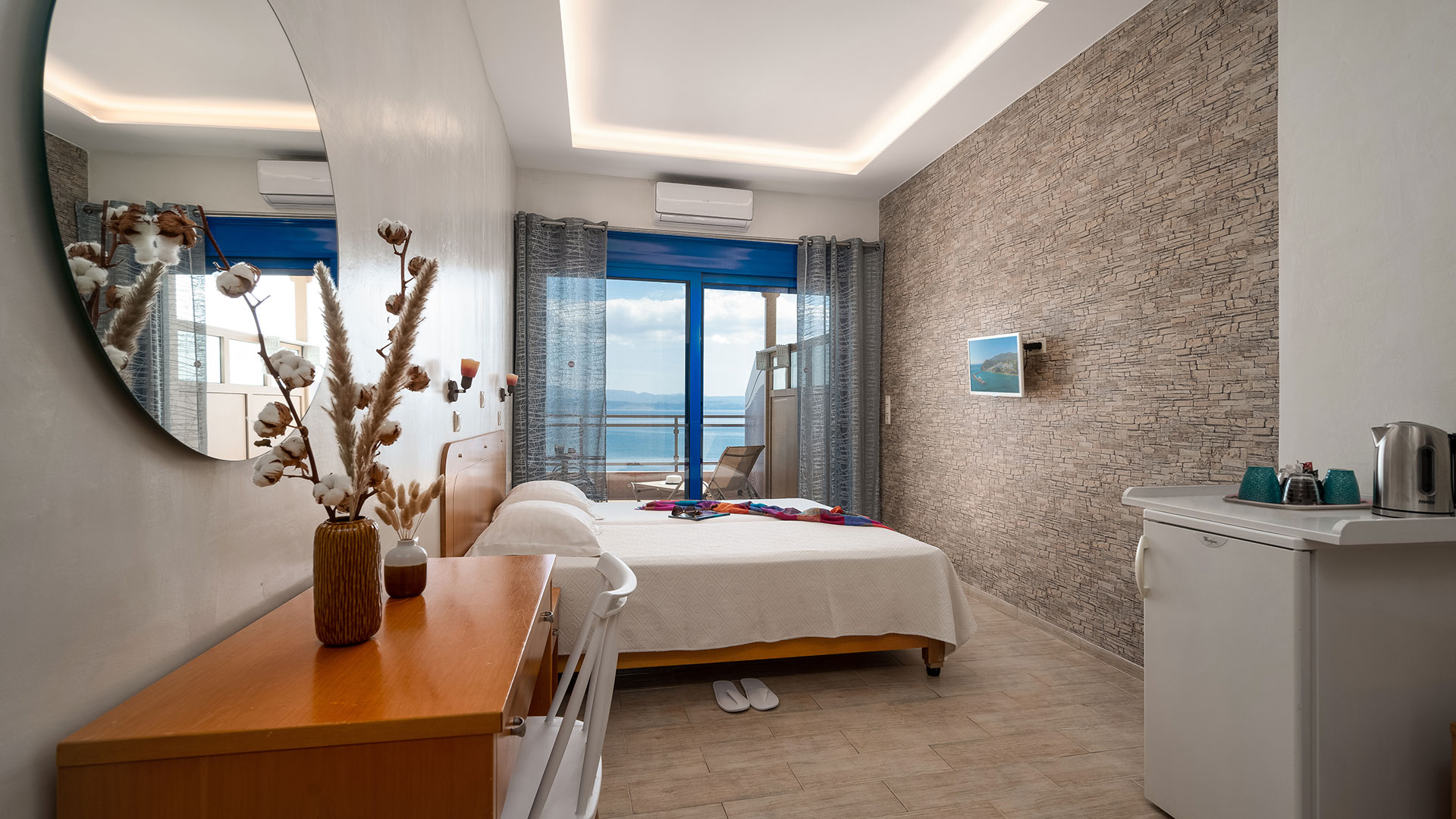
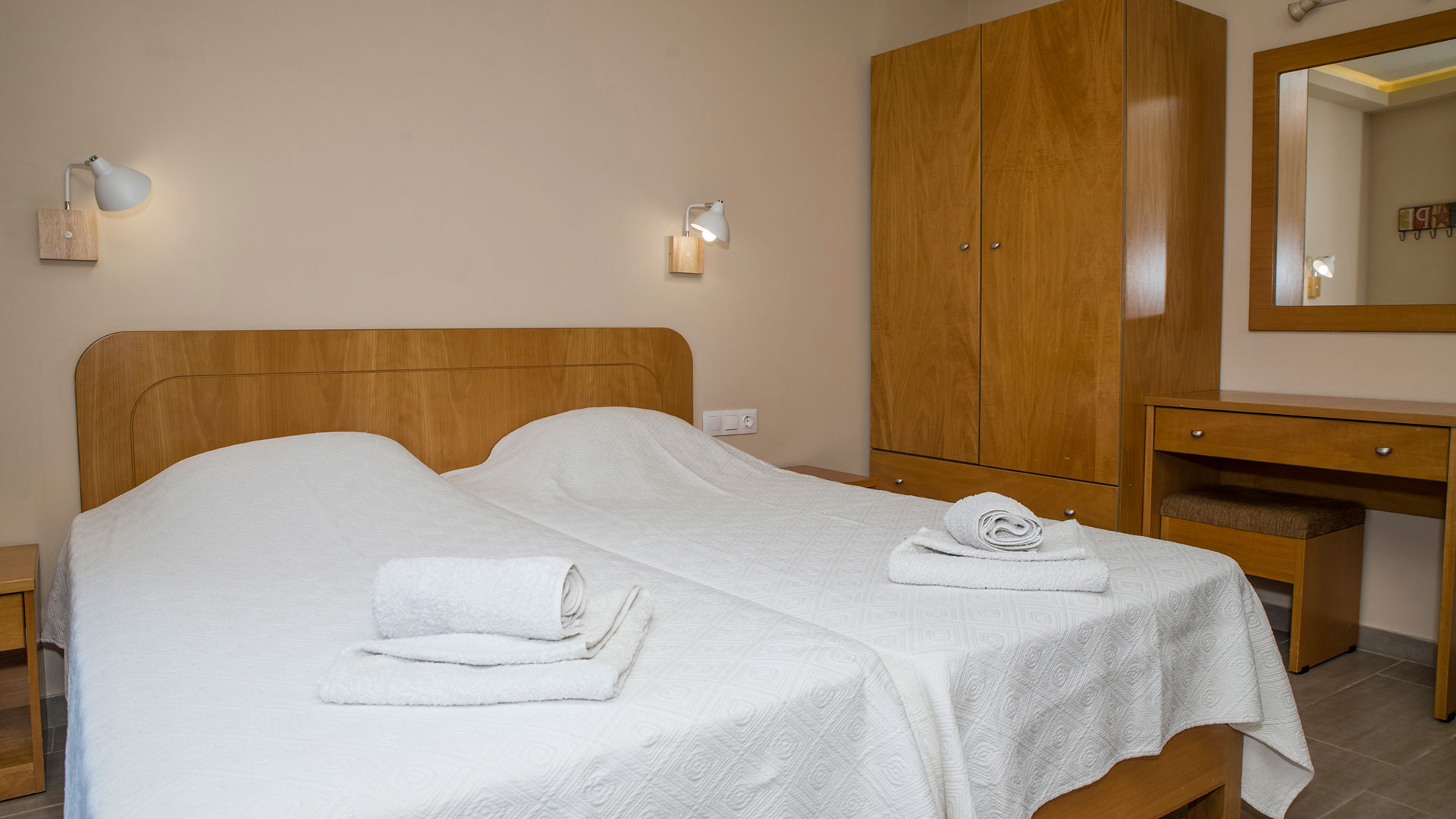
Double with mountain view
The Double Rooms with Mountain View are the ideal choice for those seeking comfort, tranquility and authentic Cretan hospitality. They are located on the 1st or 2nd floor of our hotel and are an excellent accommodation option for couples or individual travelers who wish to relax in a warm and welcoming environment. Although they are smaller than other rooms in the hotel, they stand out for their functionality and comfort. The decoration in earthy tones creates a relaxing atmosphere. The rooms have comfortable large private balconies, from which you can enjoy the view of the picturesque village or the road. The bathroom, spacious and functional, has all the modern amenities for a relaxing stay. At the same time, all rooms of Minos Boutique Hotel have a card-activated power system, ensuring practicality and energy efficiency. Choose one of the Double Rooms with Mountain View by booking the room that suits you and indulge in the unique accommodation experience that Minos Boutique Hotel offers you!
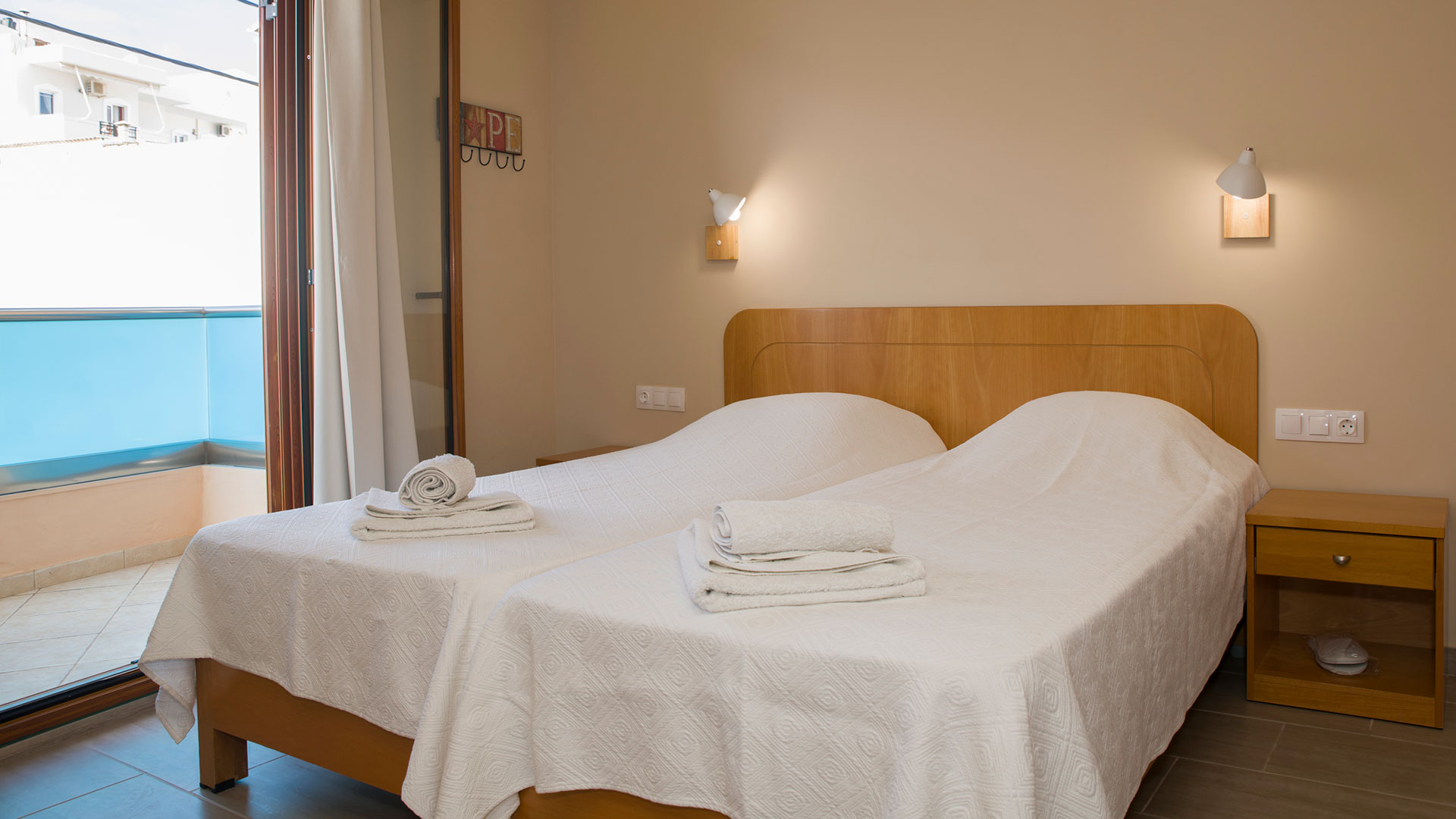
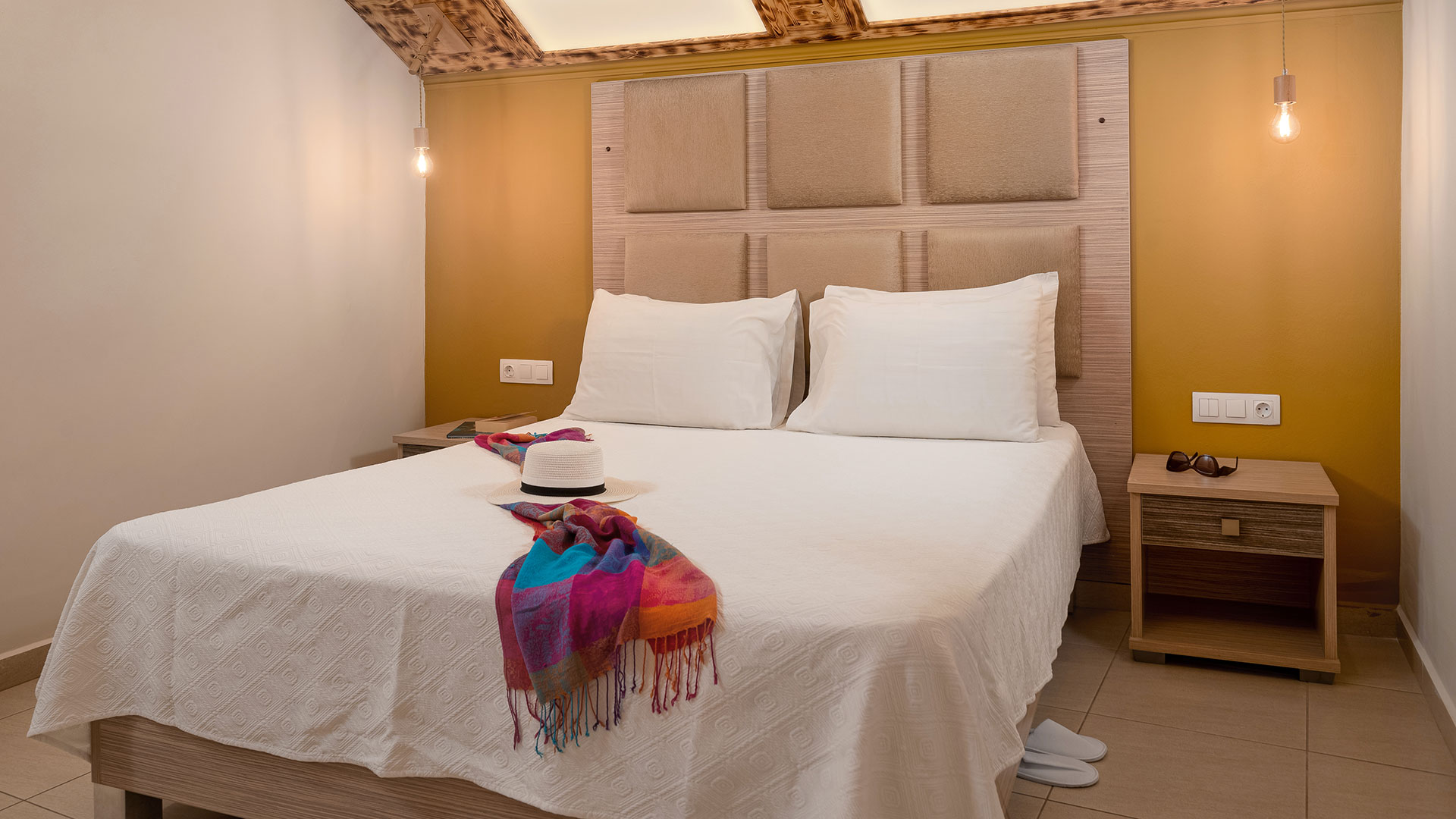
Junior Suite with side sea view
Enjoy your stay in our comfortable and elegant rooms, decorated in earthy tones that exude warmth and relaxation. The rooms are spacious, sunny, with large windows that allow natural light to bathe them throughout the day. The bathroom offers you absolute comfort, as it has a large shower or bathtub with a cabin, for moments of absolute relaxation. Enjoy the magnificent view of the sea from the large and comfortably equipped private balcony. Most rooms have an outdoor seating area and sun loungers on the balcony, ideal for enjoying the sun and the breeze of the island view. These rooms are located on the 1st and 2nd floors of our hotel and all have a card-activated power system, ensuring practicality and energy efficiency. Book the room that suits you and indulge in the unique accommodation experience that Minos Boutique Hotel offers you!
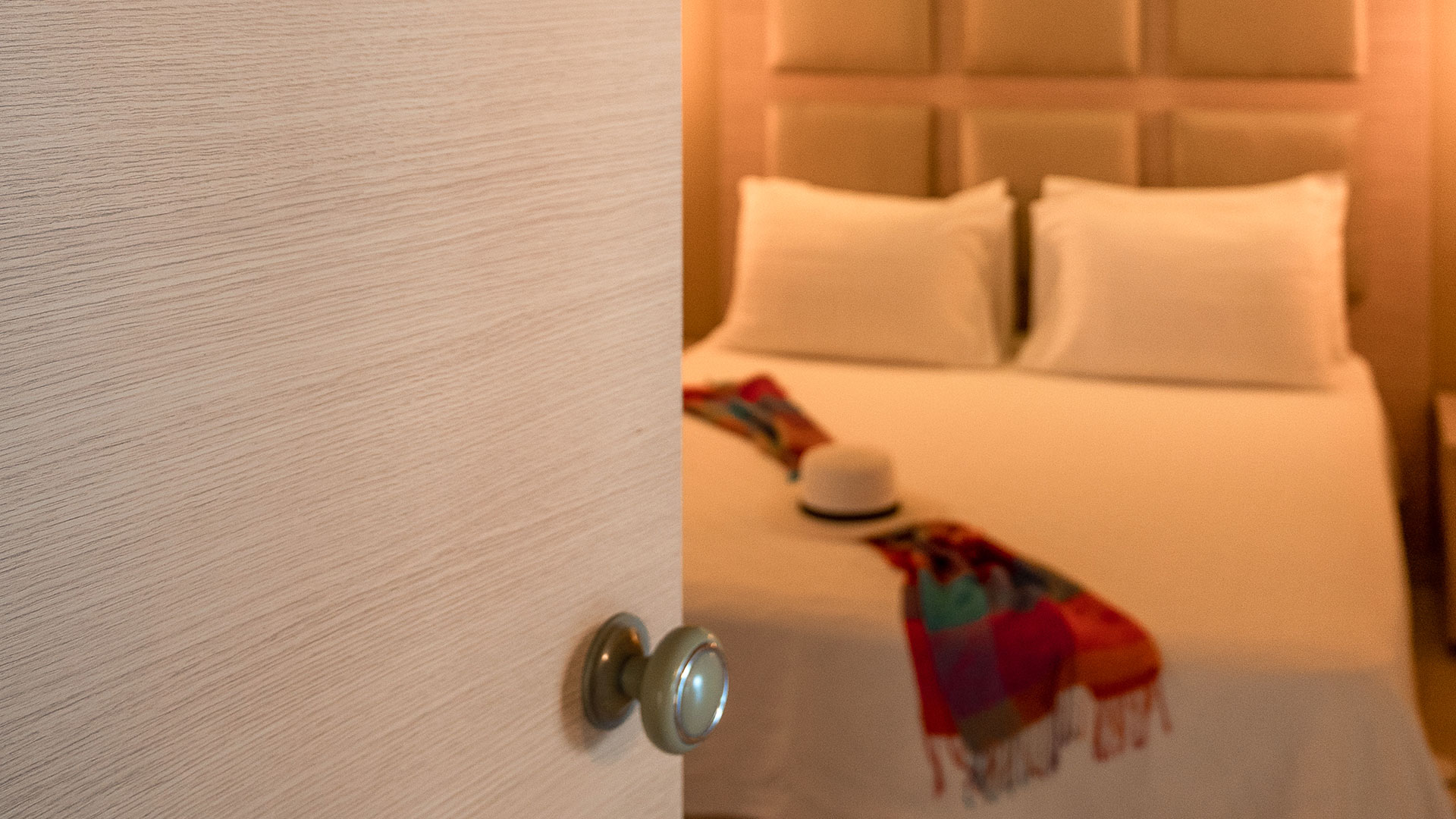
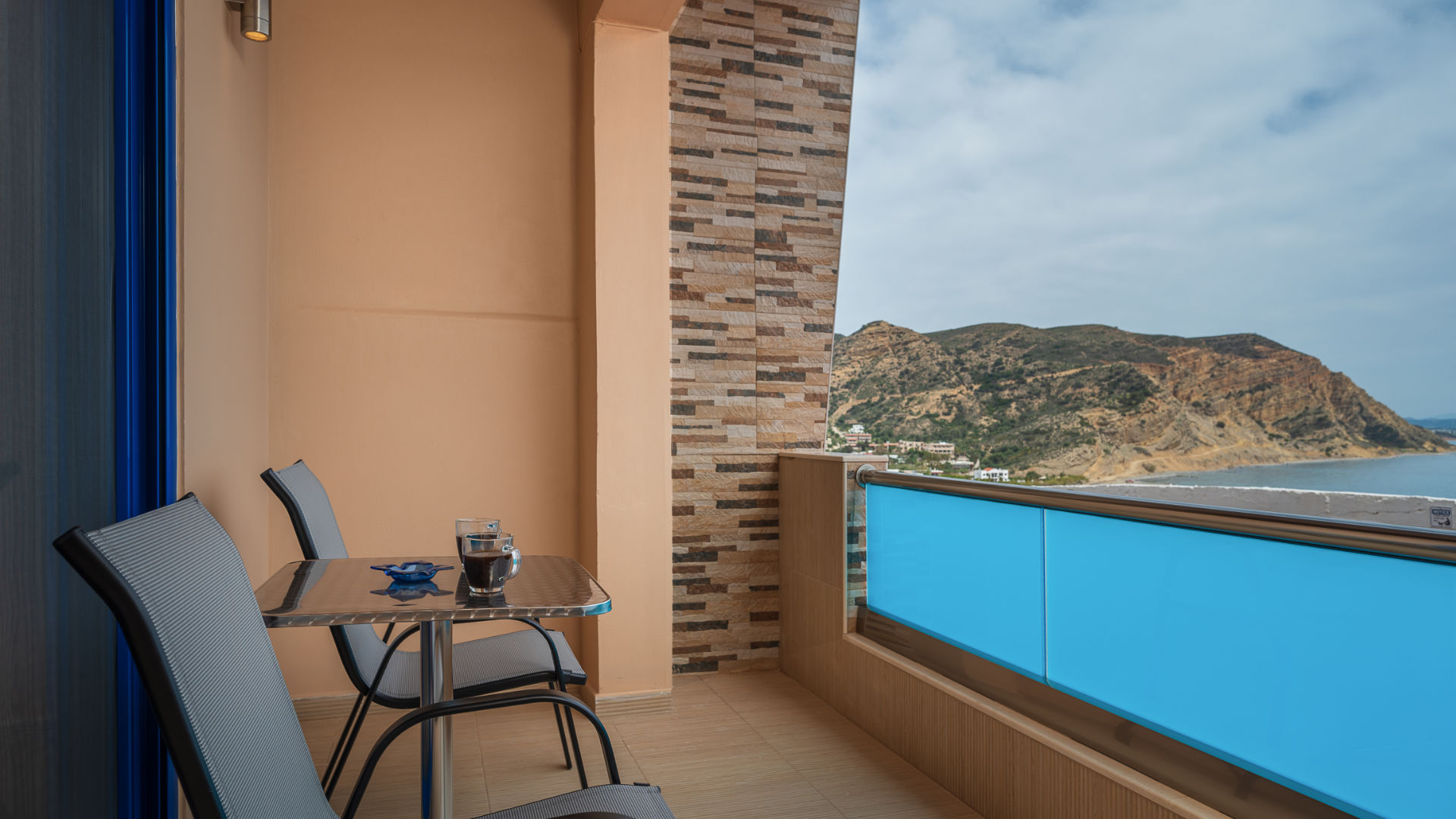
Ground Floor Room
Enjoy relaxation and comfort in this spacious room, which is located on the ground floor, ideally located on the road to the beach. Decorated in earthy, soft tones, it offers a warm and welcoming atmosphere. It features a comfortable balcony where you can relax enjoying the cool island air, as well as a large bathroom for extra comfort. The small, fully equipped kitchen and dining area make the room ideal for those who want autonomy during their stay. The room, designed to offer relaxation and functionality, has all the modern amenities you need for a pleasant stay. It is an ideal choice for couples or travelers looking for comfort and functionality within close proximity to the sea. Book the room that suits you and indulge in the unique accommodation experience that Minos Boutique Hotel offers you!
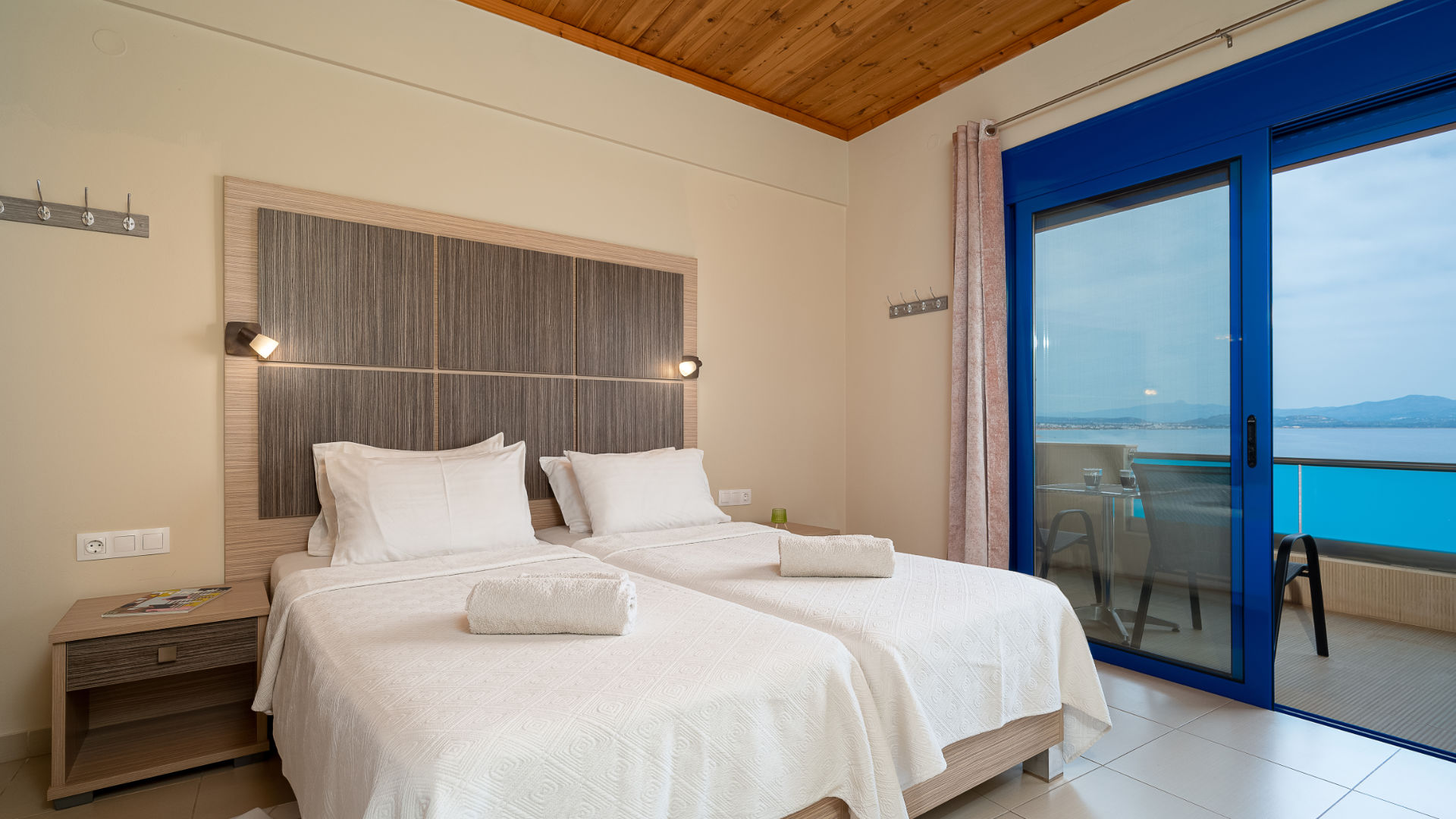
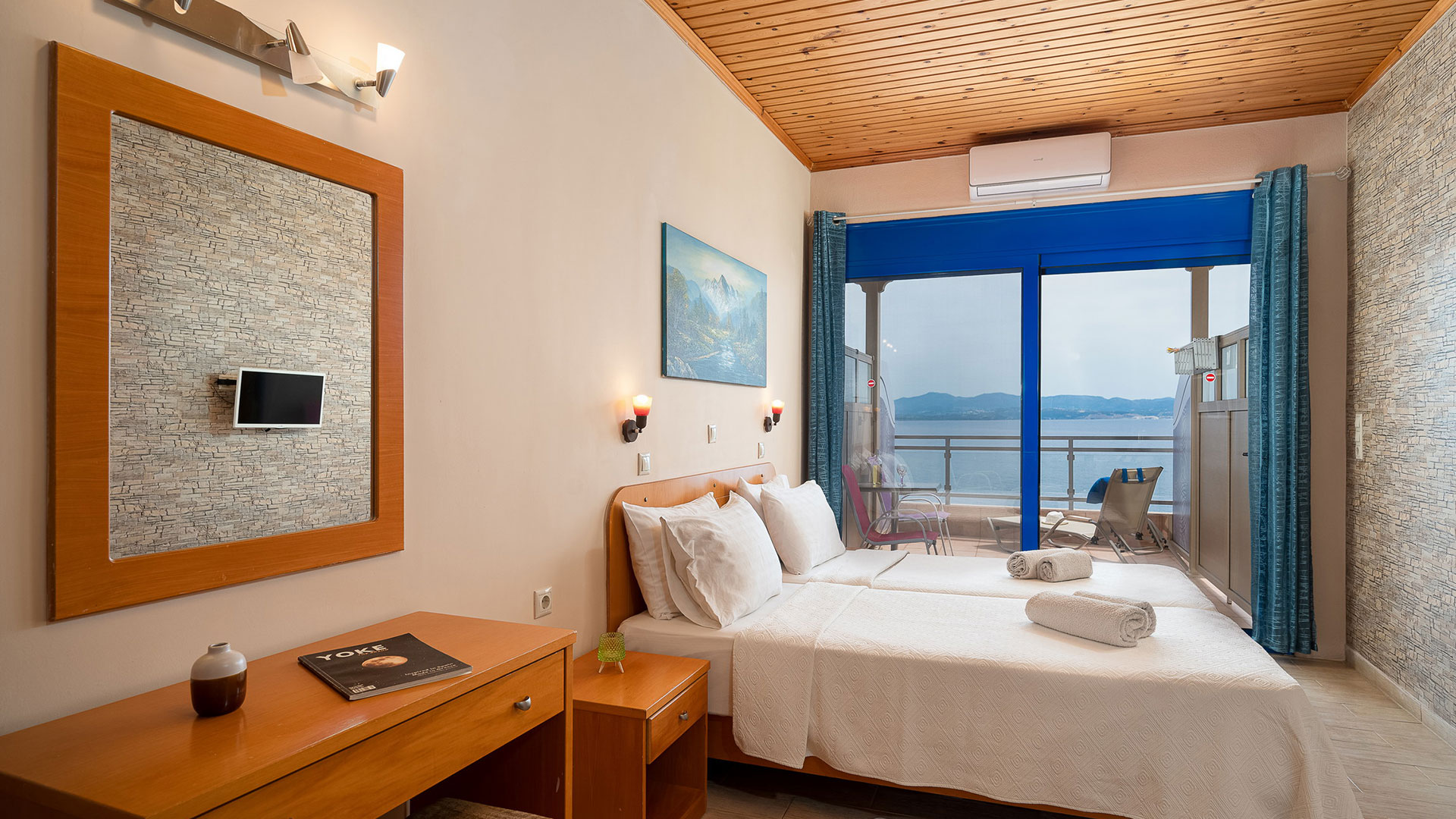
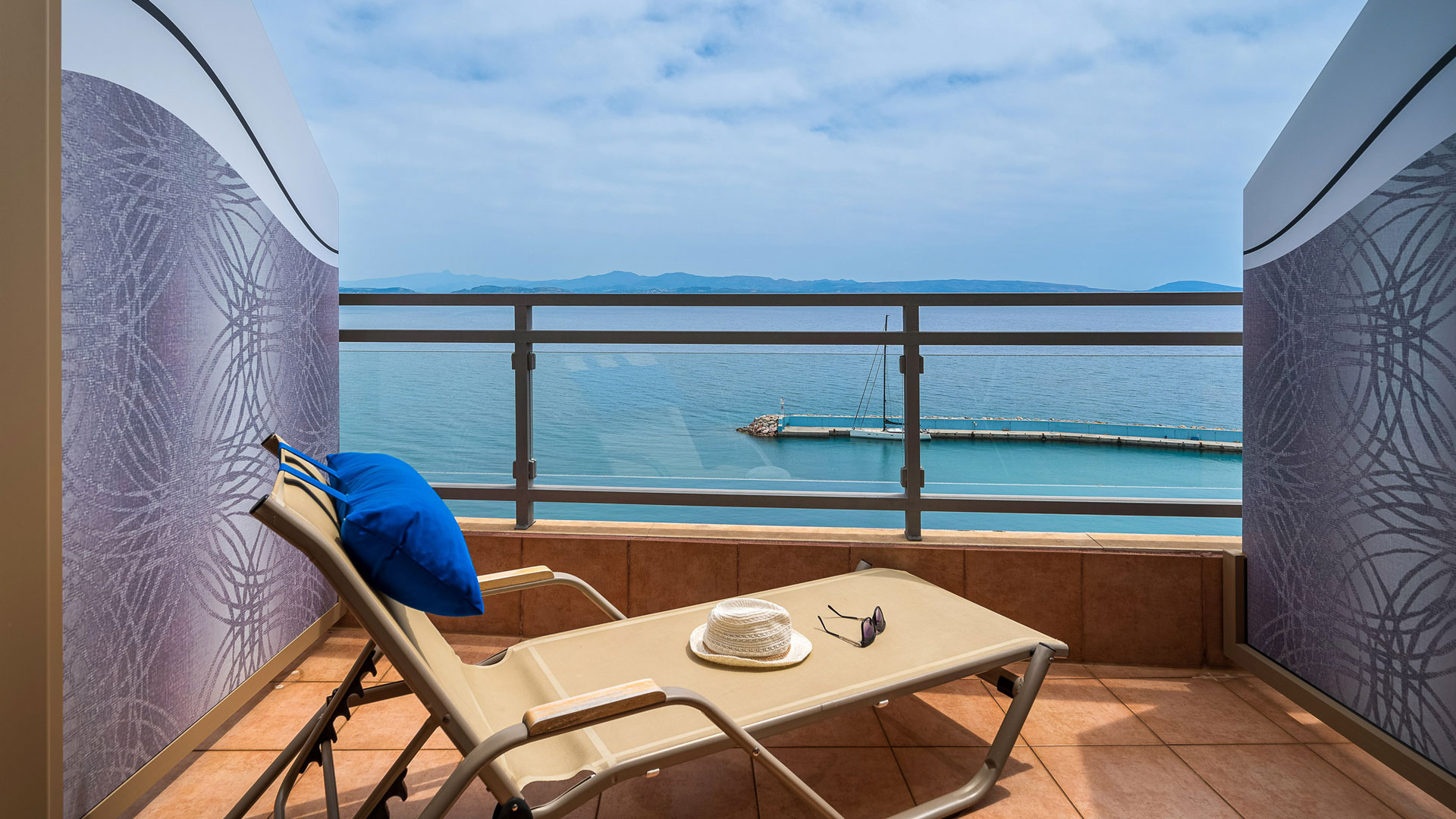
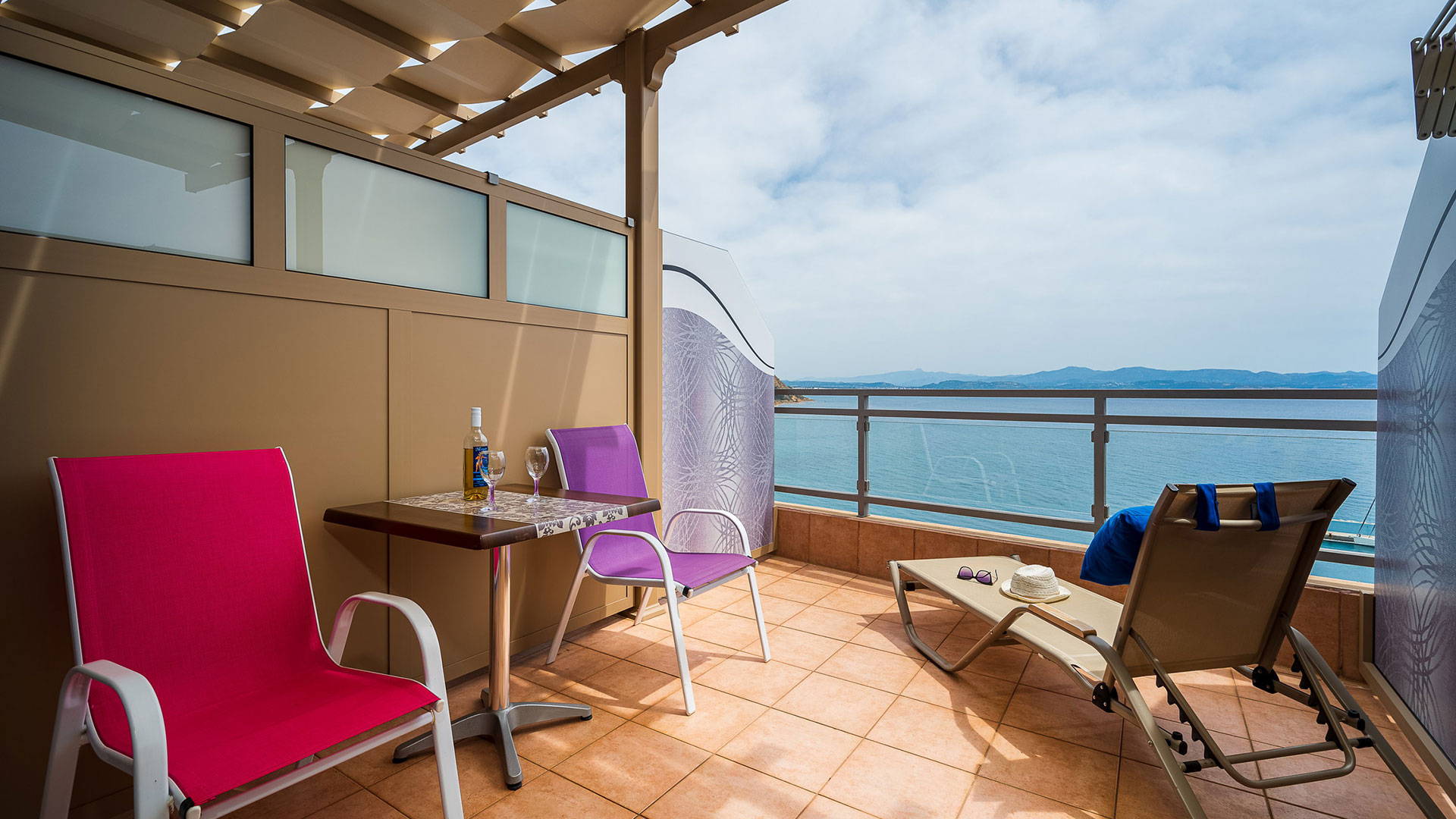
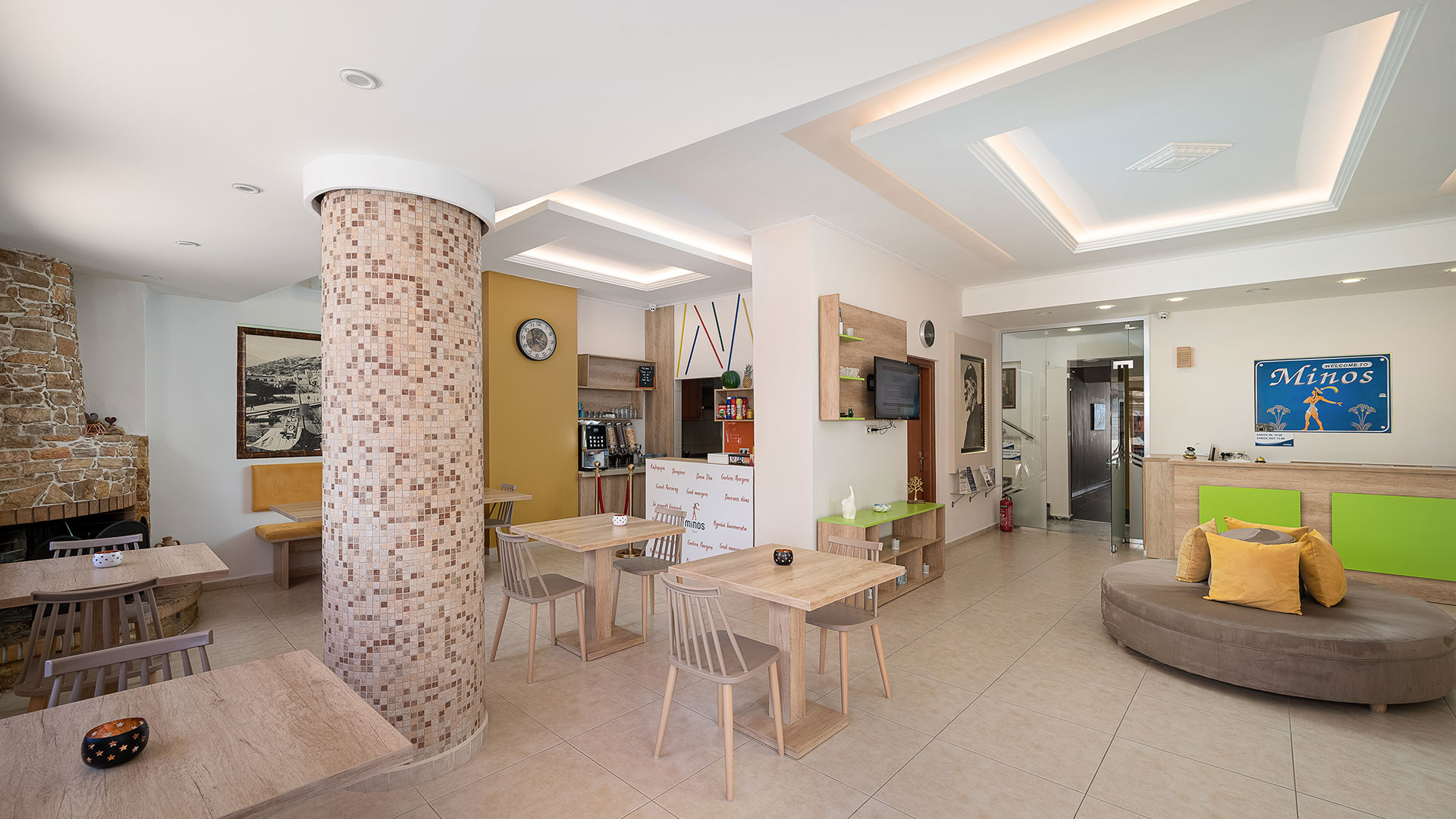
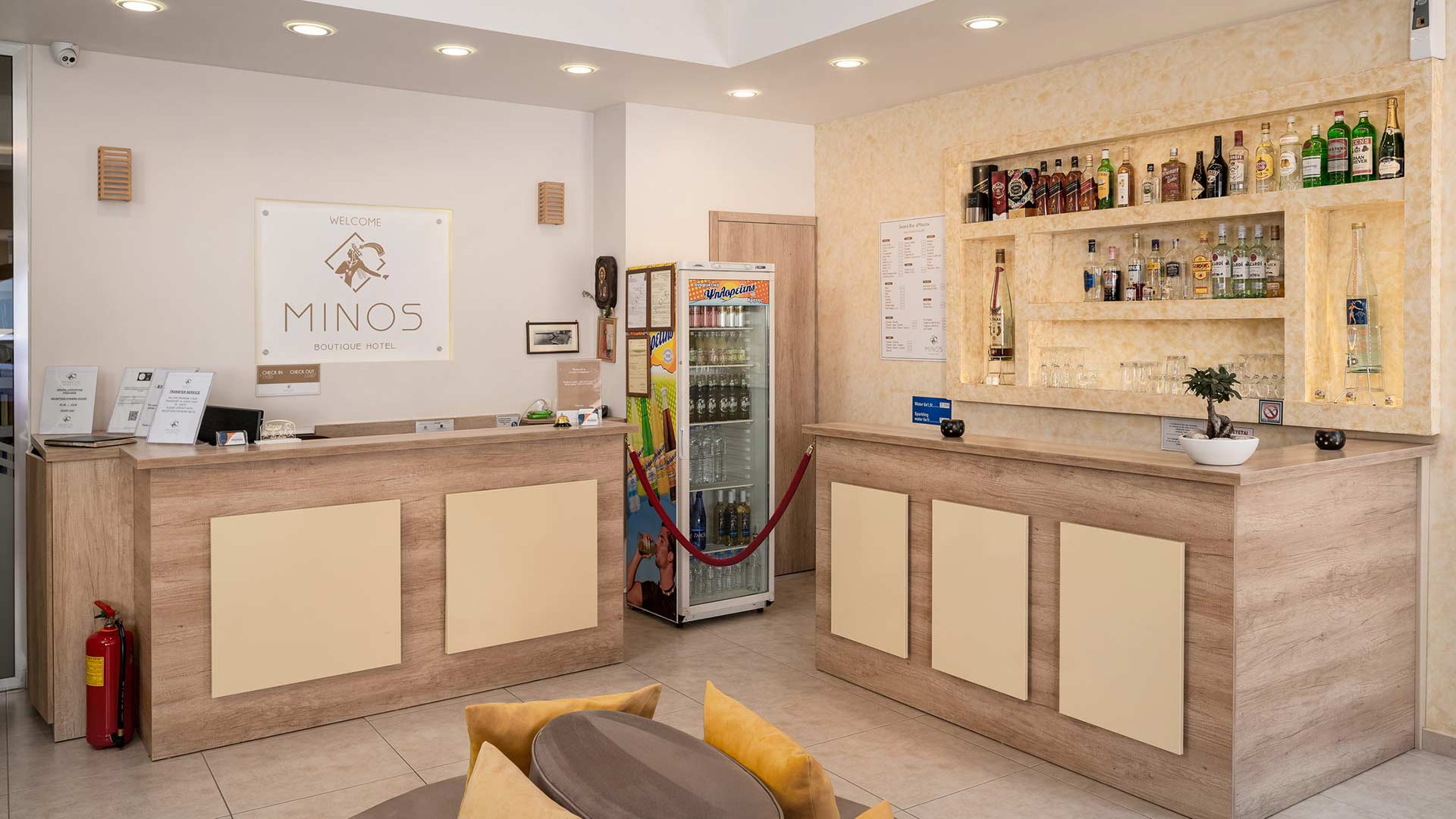
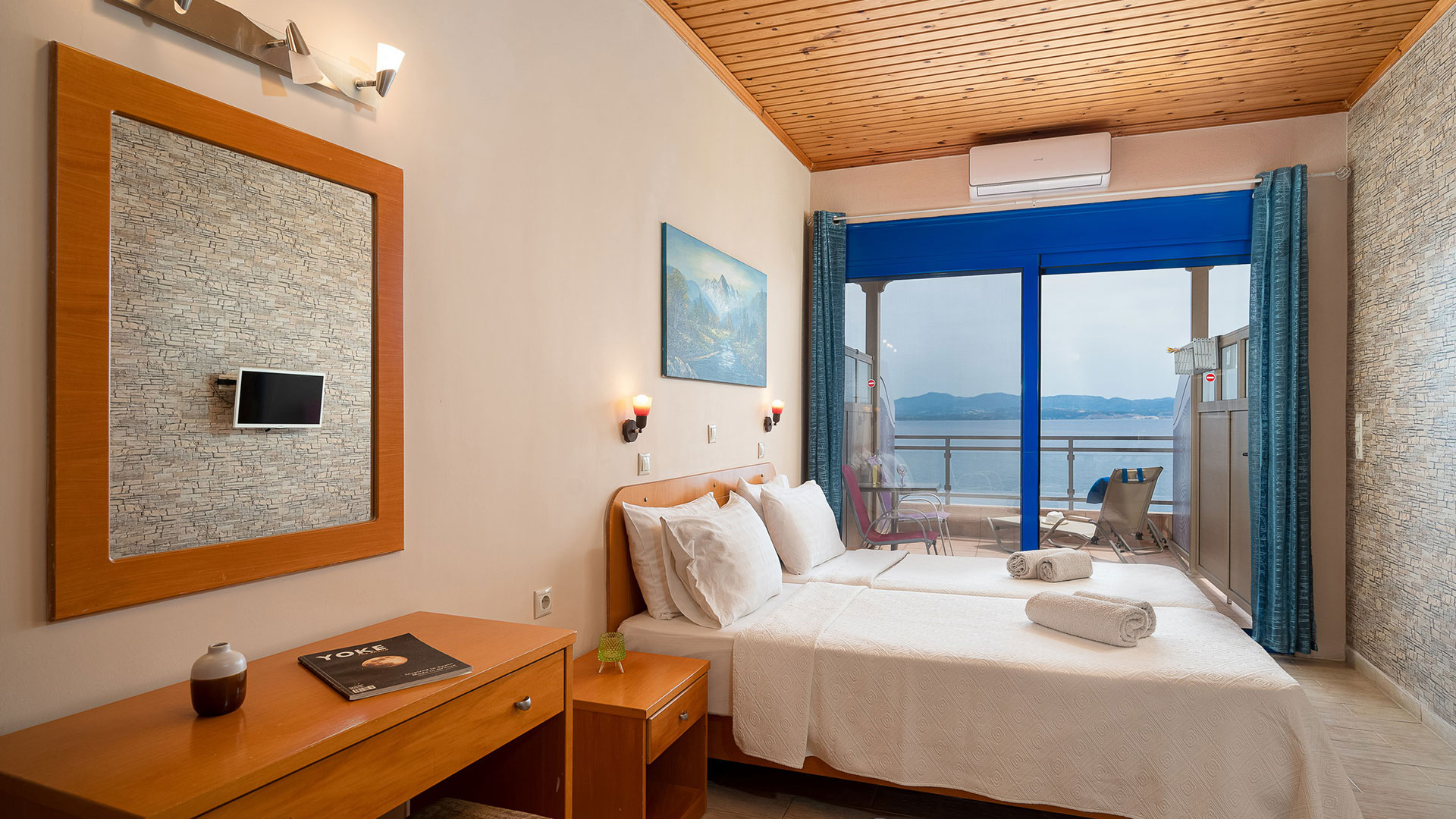


Superior Double Sea View


Double with mountain view


Junior Suite with side sea view


Ground Floor Room



Hearty breakfast

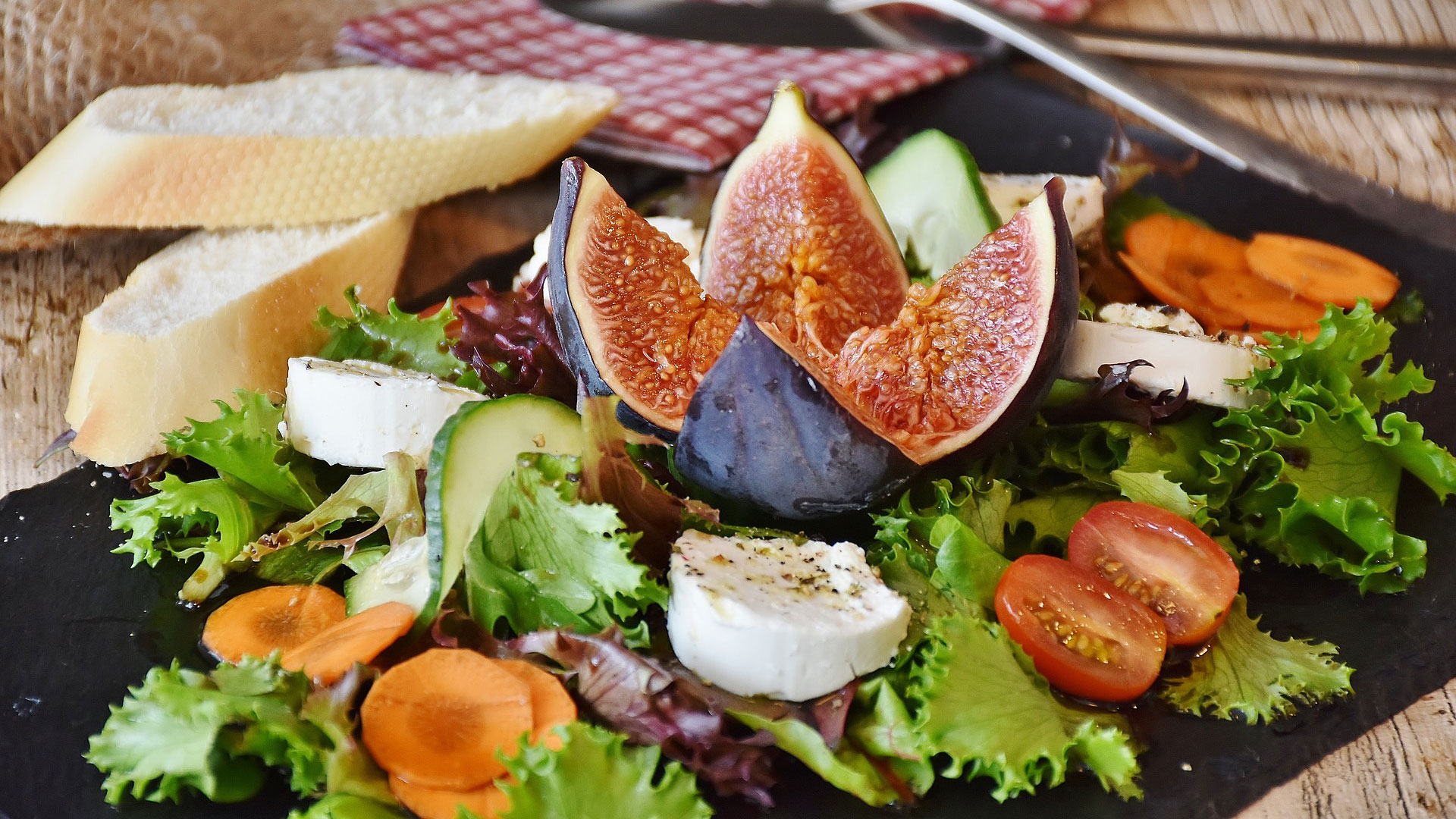

Food & Drinks
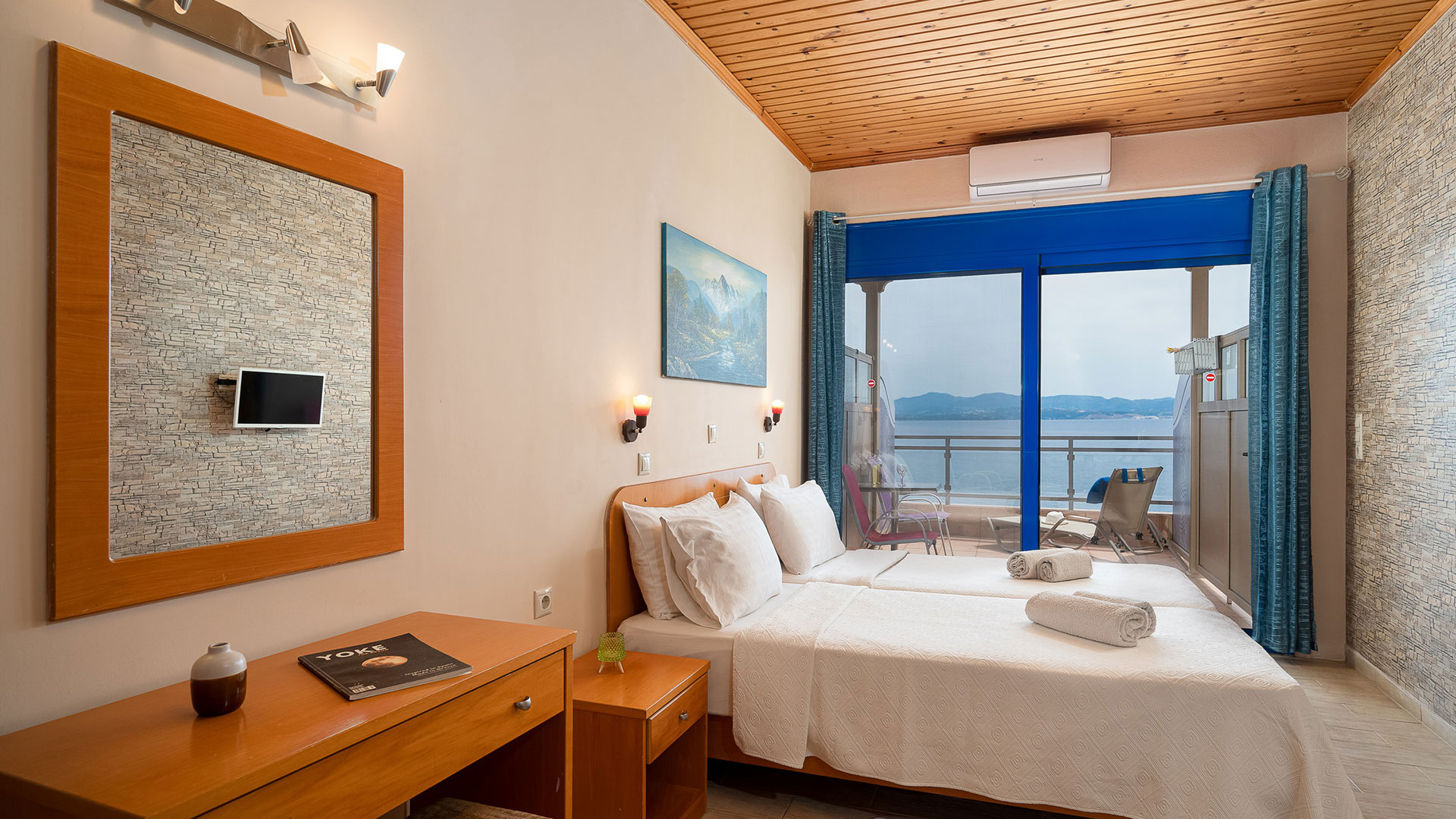
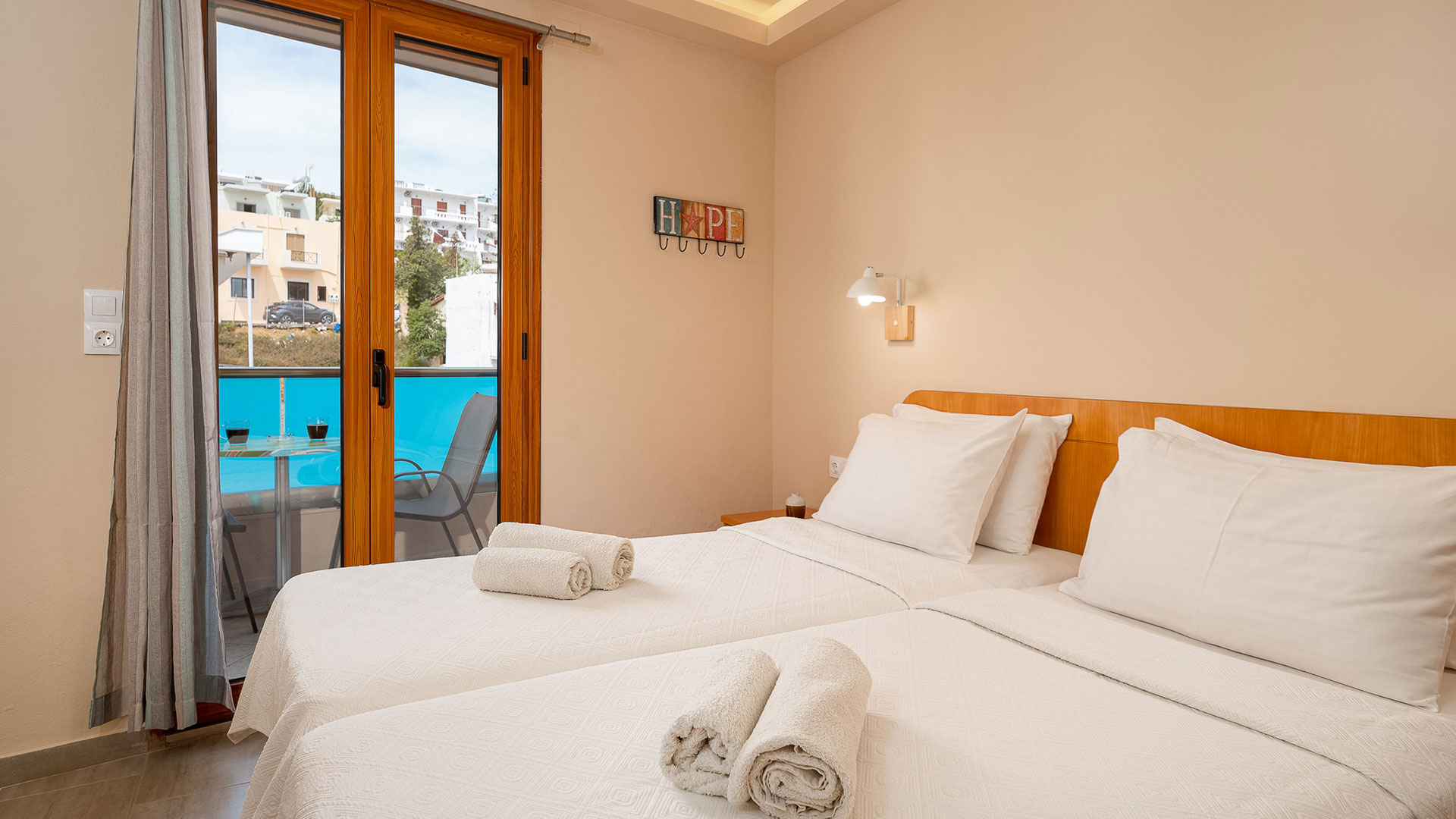
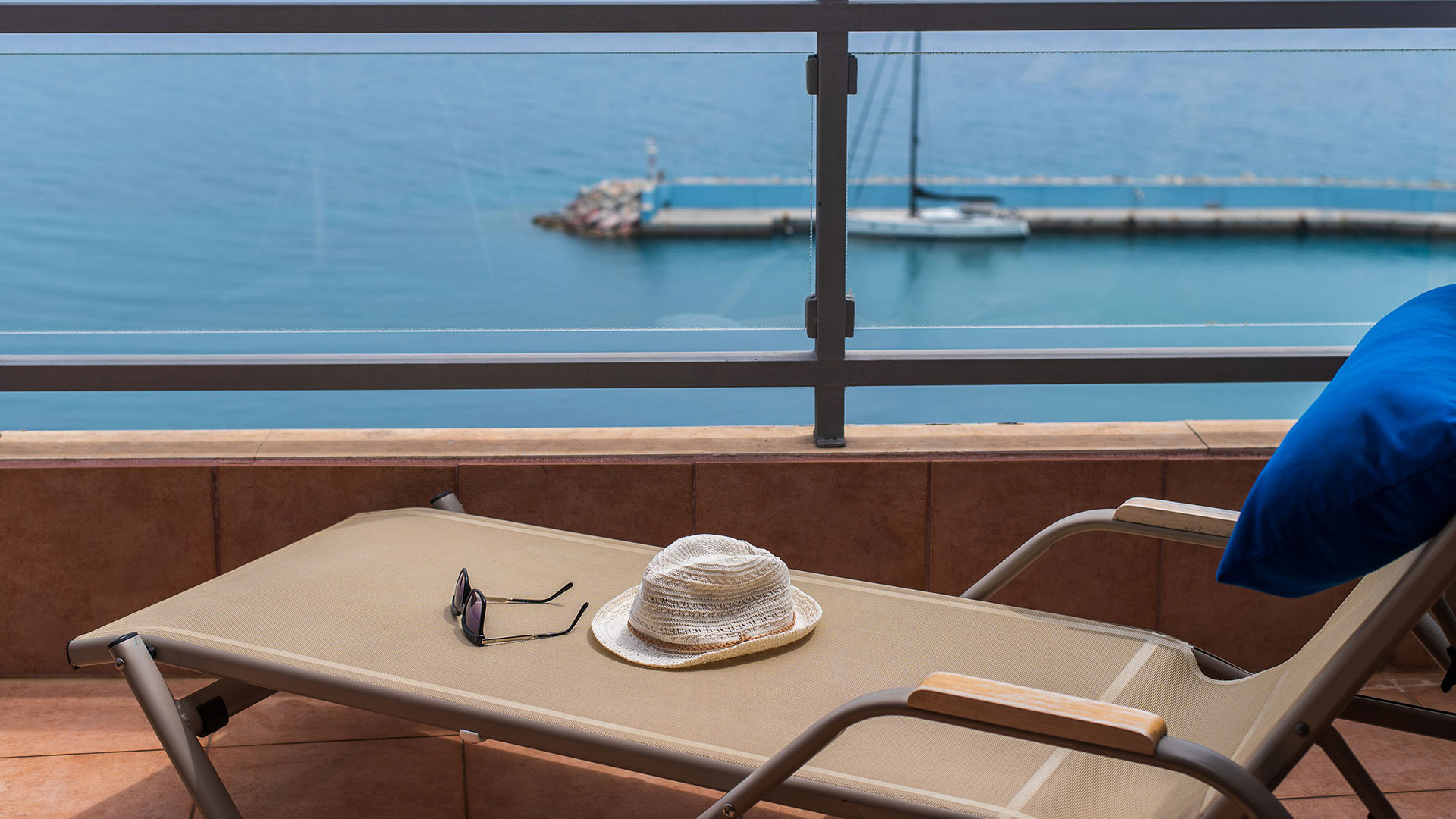






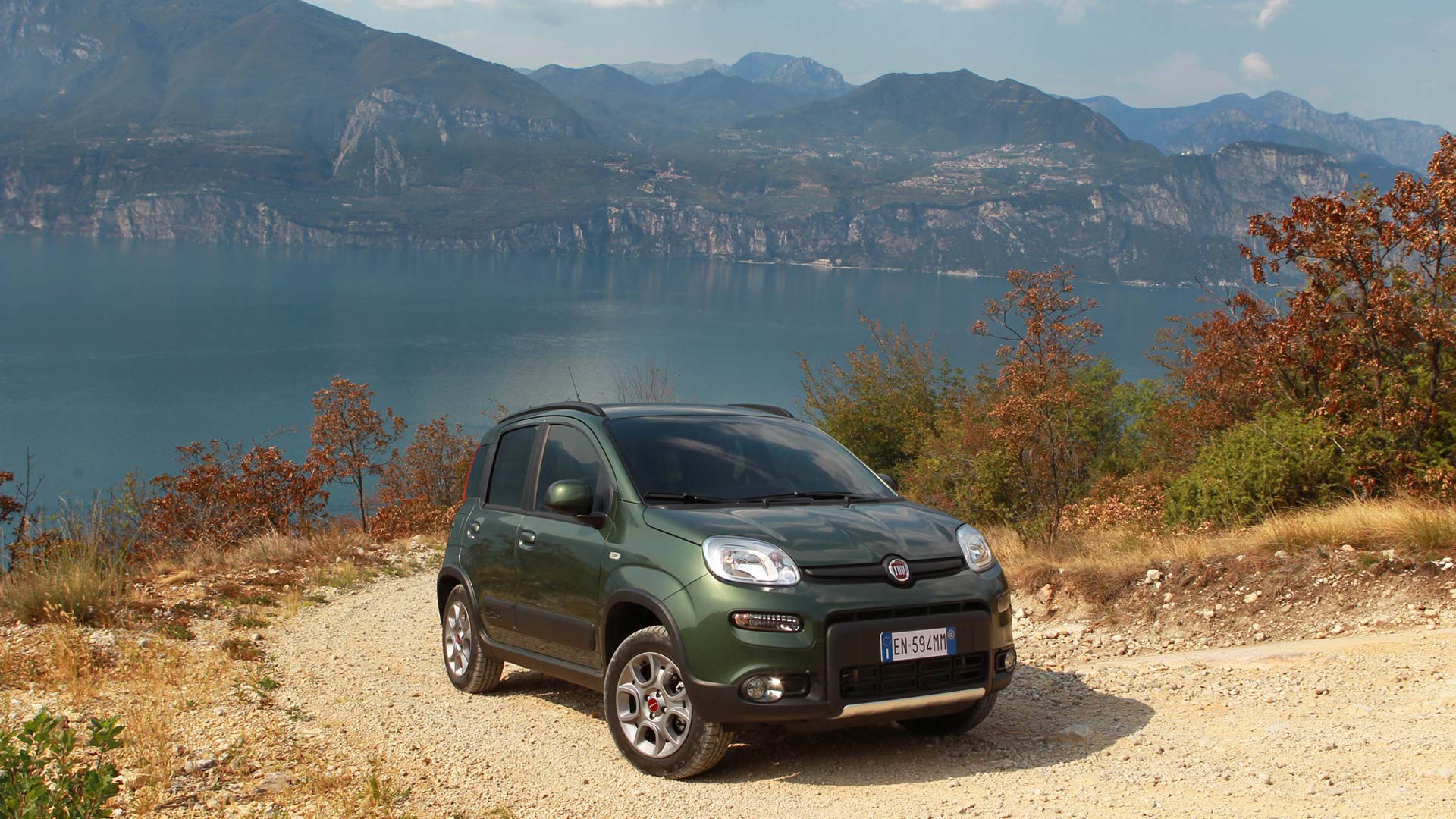
OUR REVIEWS

Evelyn
Das Hotel ist sehr gepflegt, super tolle Aussicht. Die Zimmer sind sehr schön, alles da was man benötigt. Super nette Eigentümer. Immer gut gelaunt.
Das Hotel liegt mit Auto ca. 60 Minuten vom Flughafen Heraklion entfernt. Autovermietung und Supermarkt fast nebenan. Mit dem Auto erreicht man alle Ziele sehr gut.
Die Zimmer sind sehr gut ausgestattet, geschlafen haben wir sehr gut. Klimaanlage vorhanden, Kühlschrank auch vorhanden und auf dem Flur eine kleine Miniküche. Perfekt.
Sehr nette Eigentümer, da bleibt kein Wunsch offen.Der Chef des Hauses lässt auch beim "nur" Frühstück nichts aus. Es war ein tolles tägliches Frühstück. Danke Yannis.

Kostas and Maria
Although we have traveled a lot of such service, cleanliness and friendly environment we have not met again! The fanatic Giannis, tireless, takes care of everyone and everything! Incredible breakfast and a lot of tsikoudia! It will be our definite preference the next time we come back to Crete!
AWARDS AND BADGES
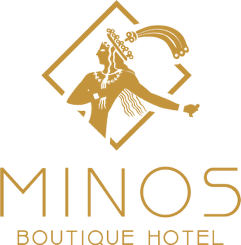
SUBSCRIBE TO OUR NEWSLETTER
Acceptance of Terms and Conditions and privacy.
MINOS BOUTIQUE HOTEL
Agia Galini
Rethimno, Crete
74056
GR-Greece
Phone: +30 28320 91292
e-mail: [email protected]

Web booking Engine and Web Site development powered by Flexibook.
Do you like a similar website for your company? Click Here!
From
per day


Check-in
Check-out
Nights
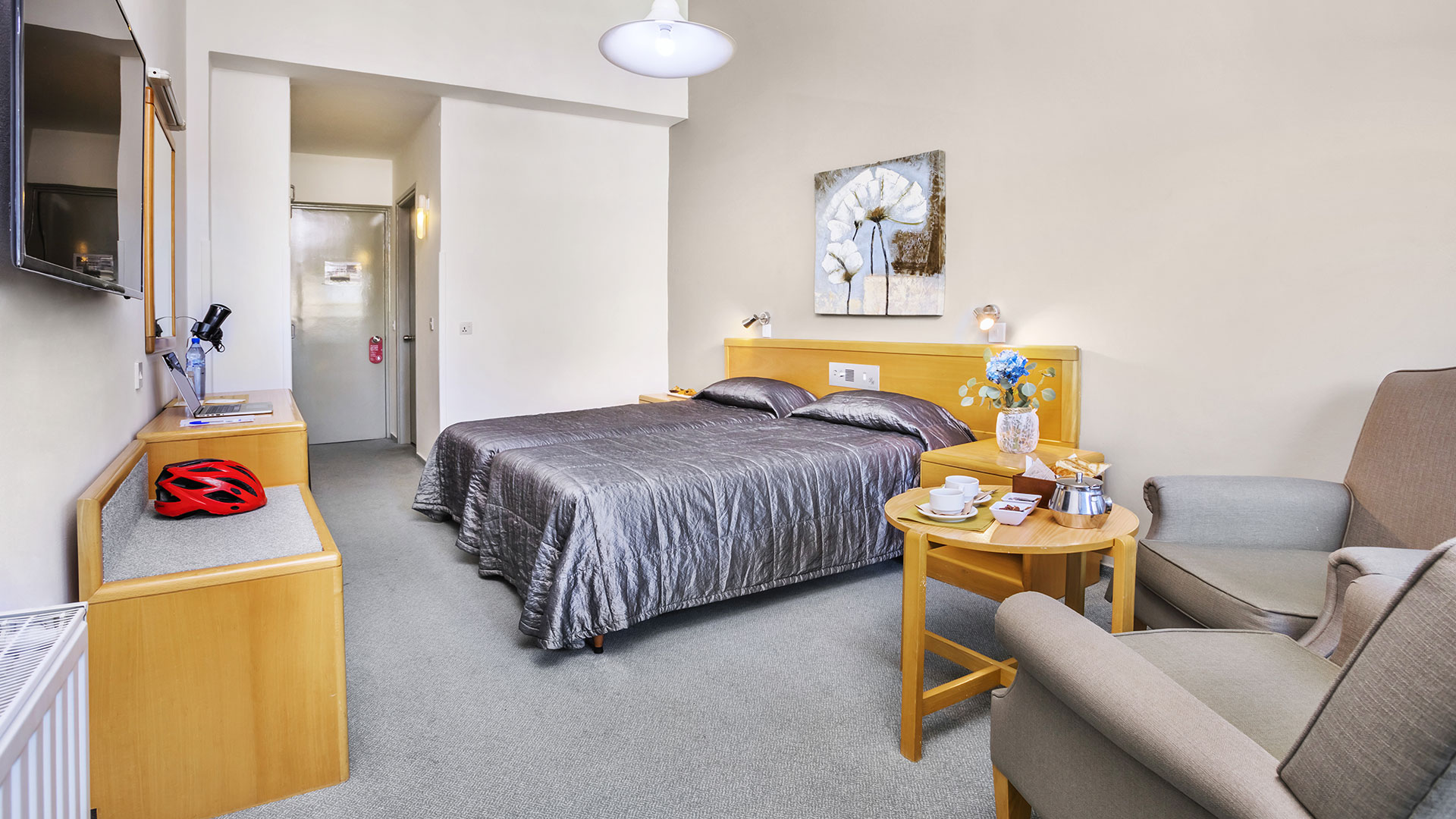
Select a room
Double Mountain View
Double Mountain View Breakfast Included Not Refundable
Ground Floor Superior Double Street VIew
Ground Floor Superior Double Street VIew BB NR
Superior Double Sea View
Superior Double Sea View Breakfast Included Not Refundable
Junior Suite Side Sea View
Junior Suite Side Sea View Breakfast Included Not Refundable
 Official Website Official Website |
|
|
|
€ 200 |
|
|
€ 200 |
|
|
€ 200 |
Reasons why book direct

Best price guarantee

Upgrades and privileges

Save Money
Pleasant stay, Pauline





Source: 
Went to this hotel without reservation because the location was very good. We had a Seaview hotel room with a nice and big balcony. The staff is super friendly and we had an amazing breakfast with an omelet and fresh juice
Exceptional, Margrete, United States of America





Source: 
Wonderful, welcoming owners. Fantastic, tasty breakfasts, great location with sea view, convenient parking.
Superb, Beltayne, United Kingdom





Source: 
This delightful hotel, in a splendid location, has very comfortable and clean rooms with fabulous views. The staff are very welcoming . The bathrooms are well designed which is not something obvious in Crete. Parking was plentiful and easy. Highly recommended.
Wonderful stay!, Pamela, Australia





Source: 
Fabulous location, super clean, fabulous breakfast and wonderful staff.
Best Hotel we found at Kreta, Marvin S





Source: 
Best Hotel we found at kreta. The persons in Hotel are so kind and the view from the balcony is sooo beautiful. Also the breakfast is the best we ever had. You can also enjoy at your room with the beautiful fiew.
Also everything in Agia galini is very nice. You have many restaurants you can eat and enjoy. A harbour an a nice beach.
For us the best place to stay at kreta
Bargain place in a great location, Roba666,





Source: 
Plentiful breakfast
Friendly staff
In between town and beach, be aware the walk is steep. Probably 10 minutes in either direction.
I got free parking from them
Fridge in the room
Balcony with clothes line
Sea view from balcony
A special cozy hotel for beautiful holidays in Crete, Daredevil





Source: 
My wife and spent four nights at hotel Minos during August.
The hotel was suggested us by the travel agency ... well, it was a very good suggestion.
Rooms are very clean and comfortable; from the balcony we could enjoy a beautiful sight of the port and of the beach.
Giannis and Marilena, the owners of the hotel are super friendly, efficient and supportive. Special thanks to Marilena for helping us to fix our car with a flat tire !
Beakfast is delicious and rich.
Perfect stay, Vlad, Switzerland





Source: 
We loved this place. Amazing view , room was really spacious, beds are comfortable.
The staff is very kind.
The small village is cute and has nice restaurants . fully recommended.
Fabulous Small Family Run Hotel, Lesley S, Edinburgh, United Kingdom





Source: 
This was our second visit to Hotel Minos in Agia Galini in Crete. What a lovely welcome we received from Marilena and Janus, the hotel owners. Our room was very well equipped - spacious with 2 large beds, fridge, tea and coffee making facilities, air conditioning and a superb shower room (with complementary toiletries). When we opened our shutters in the morning, the view of the harbour and beyond was absolutely beautiful. It was so relaxing spending the early evening sitting on the balcony watching the fishing boats coming and going.
Breakfast is an event in itself. Janus, who is also the chef, is hilariously funny and thoroughly enjoys laughing with his guests. Give as good as you get though! Breakfast is a big affair. As much as you can eat and all served to you with the exception of tea and coffee. All freshly made and served with a massive smile.
This gem of a hotel is so welcoming, a lot of their guests go back every year with some staying for 3-4 weeks! Wish it was me ....
We enjoyed it so much, we’ve already booked for 2019 and we cannot wait to go back.
Best choice in Agia Galini, Simon, Germany





Source: 
Amazing view from the upper rooms, very clean and comfortable, fast WiFi, super friendly and nice owners, the best breakfast we ever had in Greece.
Powered by